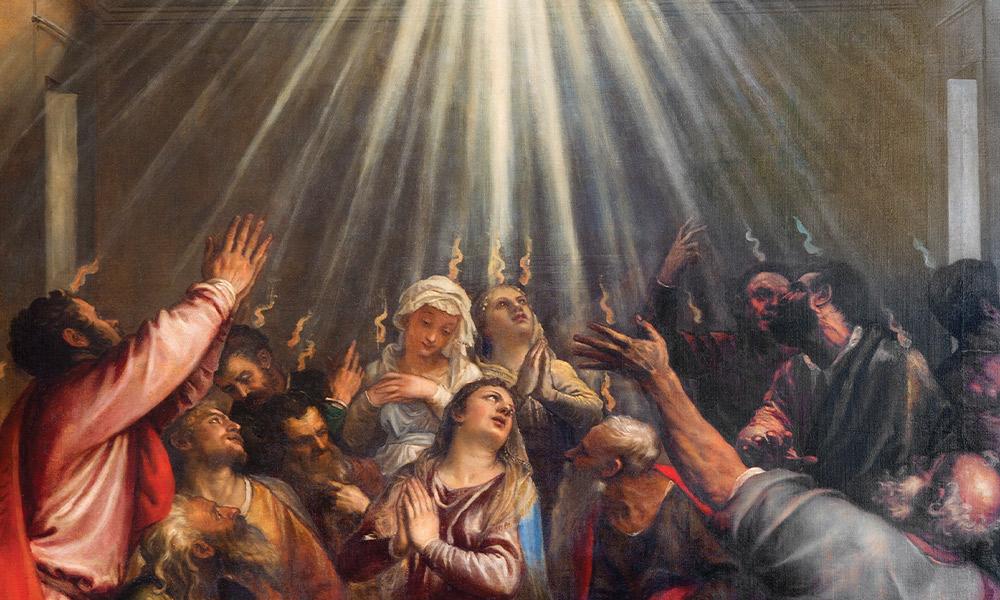
Where Does the Word ‘Pentecost’ Come From?
"When the time for Pentecost was fulfilled, they were all in one place together. And suddenly there came from the sky a noise like a strong driving wind, and it filled the entire house in which they were. Then there appeared to them tongues as of fire, which parted and came to rest on each one of them. And they were all filled with the holy Spirit and began to speak in different tongues, as the Spirit enabled them to proclaim. Now there were devout Jews from every nation under heaven staying in Jerusalem. At this sound, they gathered in a large crowd, but they were confused because each one heard them speaking in his own language … They were all astounded and bewildered." (Acts 2: 1-7, 12)
THE BIRTH OF THE CHURCH
This passage describes the descent of the Holy Spirit upon the apostles in Jerusalem following the death, resurrection and ascension of Christ. The outpouring of the Holy Spirit upon the apostles emboldened and empowered them to proclaim the Gospel of the risen Christ. They immediately left the sanctuary of the Upper Room where they had been praying and went out into the streets of Jerusalem and began preaching to the crowds in the native languages of all who were present. They baptized about 3,000 people that day.
The Church had officially been born. According to the Catechism of the Catholic Church, “the Church was made manifest to the world on the day of Pentecost” as the gift of the Spirit ushered in a new era in the “‘dispensation of the mystery’ — the age of the Church, during which Christ manifests, makes present and communicates his work of salvation through the liturgy of his Church, ‘until he comes.’” (1076)
ANCIENT ROOTS
We also learn from this passage that the Church’s feast of Pentecost takes its name from the Jewish Pentecost, or Shavuot, Shavuoth or Shabuoth. The Greek word “Pentecost” means “fiftieth.” Shavuot, which literally means “weeks,” is one of three biblically based pilgrimage days for the Jewish people. Traditionally, it required every Jewish male to proceed on foot to the Temple in Jerusalem seven weeks after Passover, or on the 50th day.
The holiday celebrates both thanksgiving for grain harvests and the giving of the law, or Torah, on Mount Sinai. In Jesus’ time, Jews from all over the Roman Empire would have attended this important festival. This gives important context to the account of the apostles speaking to Jews from different regions and being heard in different languages in Acts.
Why does the priest wear red vestments on Pentecost?
The color red represents blood and life and is used as a symbol of sacrifice, zeal and charity. Red vestments are worn to commemorate Christ’s sacrifice on Passion Sunday and Good Friday and the feasts of martyrs. Worn at Pentecost, red vestments celebrate the outpouring of the Holy Spirit on the Apostles who gave birth to the Church as they boldly proclaimed the Gospel. Red is also worn on the feast days of the apostles and evangelists.



